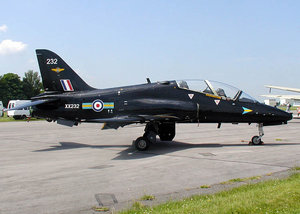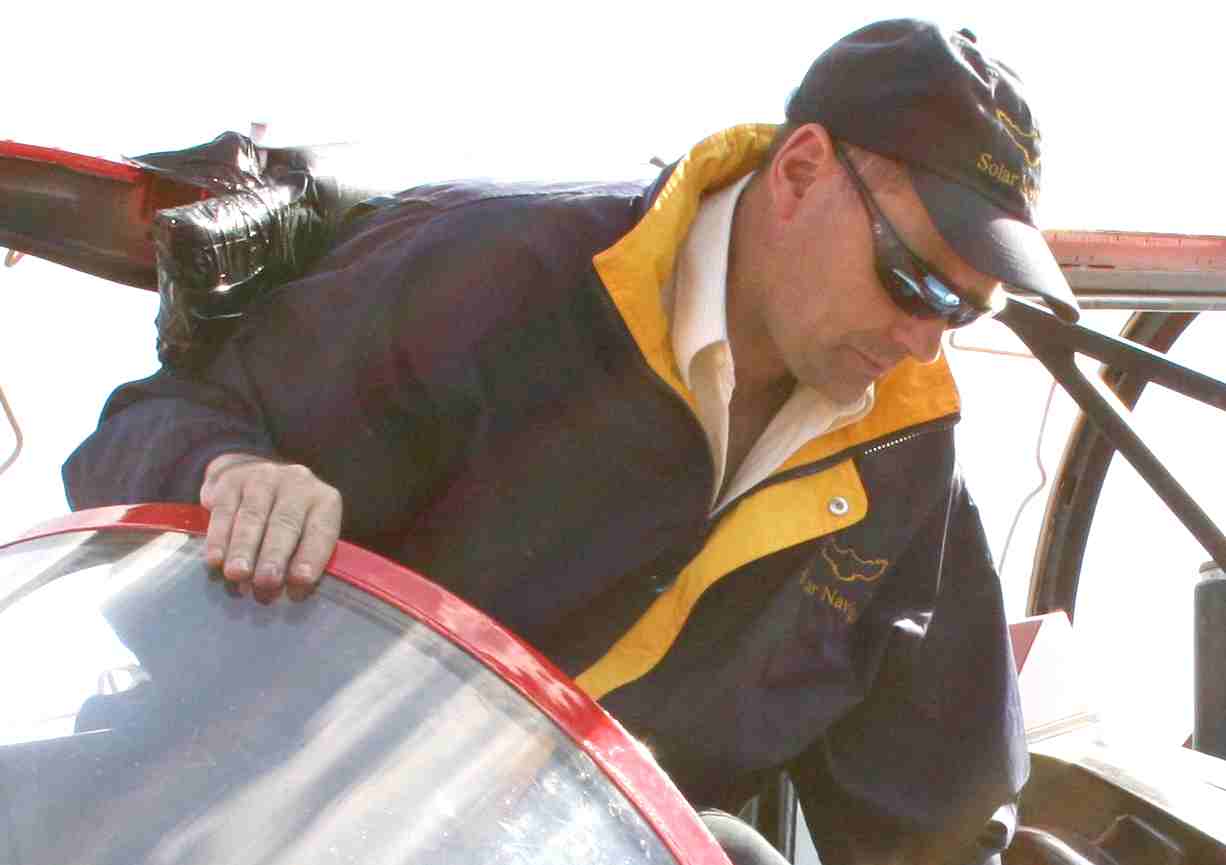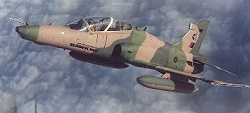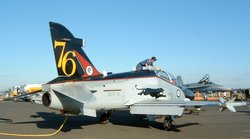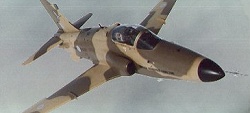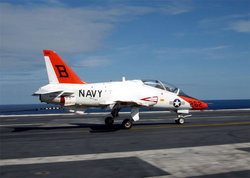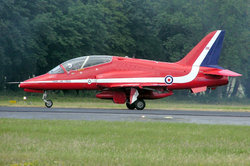|
BAE SYSTEMS HAWK
|
||||||||||||||||||||||||||||||||||||||||||||||||||||||||||||||||||||||||||||||||||||||||||||||||||||||
|
HOME | BIOLOGY | FILMS | GEOGRAPHY | HISTORY | INDEX | INVESTORS | MUSIC | SOLAR BOATS | SPORT |
||||||||||||||||||||||||||||||||||||||||||||||||||||||||||||||||||||||||||||||||||||||||||||||||||||||
|
The Hawker-Siddeley Hawk is an advanced jet trainer which first flew in 1974 and is produced today as the BAE Hawk. It is extensively used by the British Royal Air Force, and other air forces, as either a trainer or a low-cost combat aircraft.
Since entering service with the Royal Air Force in 1976, the Hawk has established an unrivalled reputation as a fast jet trainer and its success is reflected in sales to 18 customers worldwide. Most recently, Canada and South Africa selected Hawk to meet the fighter trainer requirements of their respective armed forces. Hawk operates in extreme environments that range from Finland in the Arctic Circle to Saudi Arabia in the arid Middle East and Malaysia in the Tropics.
History
In 1964 the Royal Air Force specified a requirement for a new initial jet trainer to replace the Folland Gnat. The SEPECAT Jaguar was originally intended for this role, but it was soon realised that it would be too complex an aircraft for initial jet training. Accordingly, in 1968 Hawker Siddeley Aviation began the design of a much simpler strictly subsonic trainer, the HS.1182. It was to have tandem seating and would be capable of carrying armaments, which would enable it to be used as a weapons trainer and in light combat roles.
Renamed "Hawk" in 1973, the aircraft first flew in 1974. It entered RAF service in April 1976, replacing the Gnat and Hawker Hunter in the advanced training and weapons training roles respectively. The following year Hawker Siddeley was merged with other British aicraft companies to form British Aerospace (BAe), which subsequently became BAE Systems.
The most famous RAF operator of the Hawk is the Red Arrows aerobatic team, which adopted the plane in 1979. The Hawk has excellent manoeuvrability, and while it is not capable of supersonic speed in level flight, it can attain Mach 1.2 in a dive, allowing trainees to experience transsonic handling without the cost of a supersonic trainer. The Hawk subsequently replaced the English Electric Canberra in the target towing role. The Royal Navy acquired a dozen Hawk T.Mk 1/1As from the RAF, for use as aerial targets for the training of ships gunners and radar operators.
Nelson Kruschandl tries a Red Arrows BAE Hawk
VARIANTS
Hawk T.1/T.1A
The T.1 was the original version used by the RAF, deliveries commencing in November 1976. The UK ordered 176 T1s.
From 1983 to 1986, some Hawks were equipped for the short-range interception role. 88 T.1s were modified to carry two AIM-9L Sidewinder air-to-air missiles in addition to the centerline gun pod for a single 30mm ADEN cannon. These aircraft were designated T.1A. In the event of war, they would have worked in collaboration with Tornado F.3 aircraft, which would use their Foxhunter search radars to vector the radarless Hawks against enemy targets. Such missions would have been flown by instructor pilots. Conversions were completed in 1986. With the fall of the Soviet Union and the end of the Cold War, RAF Hawks are no longer tasked with this role.
80 T.1s are being upgraded under the Fuselage Replacement Programme (FRP), which involves the replacement of the aft centre and rear fuselage sections, using new build sections derived from the Mk. 60.
Hawk 50
The Hawk 50 was the original export trainer version, from which the T-45 Goshawk was derived. The Mk.50 offered a limited attack capability. Finland, Indonesia and Kenya ordered 89 of this variant.
Hawk 60
Another export version, replacing the Hawk 50, intended for conversion and weapons training. Weapons carriage is increased. It is a two-seater, has uprated Rolls-Royce Adour 861 engines and is capable of a level speed at altitude of 555 knots (1028 km/h) or Mach 0.84.
Hawk 100
A two-seat advanced weapons trainer with additional avionics, including forward looking infrared, a redesigned wing and HOTAS.
The Hawk 100 series retains the highly-acclaimed design qualities of the original Hawk trainer. The raised rear cockpit combines excellent forward visibility for the instructor, with the capability to demonstrate all of the aircraft's functions to the student pilot in the front seat. It excels as an advanced flight trainer and operational aircraft. The Hawk 100 has also been developed into an advanced weapon systems trainer with enhanced ground attack capability. It introduces pilots to modern combat avionic systems with multi-purpose displays linked to an avionic/weapons systems digital databus. A high performance navigation system and head-up display/weapon aiming computer are combined with a forward looking infra-red (FLIR) sensor and laser rangefinder to give a highly accurate poor weather and night operational capability. Pilot workload is reduced by hands-on-throttle-and-stick (HOTAS) controls for the selection of weapons, sensors and defensive aids.
The Hawk 100 Ground Attack and Trainer Aircraft
Hawk 120/LIFT
The Hawk Lead In Fighter Trainer (LIFT) is the version selected by the South African Air Force in December 1999. This variant is powered by the Adour 951. The LIFT benefits from development carried out for the Australian Mk.127. The next generation Hawks (120, 127 and 128) feature a new wing, forward and centre fuselage, fin and tailplane. The aircraft have only 10% commonality with the existing first generation aircraft. The new variants also have four times the fatigue life of the original aircraft. 24 aircraft will be delivered.
Hawk 127
33 Hawk 127 Lead in Fighters (LIFs) were ordered by the Royal Australian Air Force in June 1997. The RAAF ordered 33 aircraft, 12 of which were produced in the UK and 21 in Australia. This variant is also powered by the Adour 871. The Hawk 127 is operated by No. 76 (New South Wales) and No. 79 (Western Australia) Squadrons of the RAAF.
Hawk 128
The Hawk 128 is the new Advanced Jet Trainer (AJT) for the RAF and Royal Navy. The Mk.128 includes modern CRT displays instead of conventional instrumentation, and allows preparation for flying modern fighter aircraft, particularly the all "glass" Typhoon. It has Rolls-Royce Adour 951 engines. BAE funded development of the 128, building on the design of the Australian Mk.127 and the South African Mk.120s. The MoD have ordered 20 aircraft with an option for 24 more.
Hawk 127 of No. 76 Squadron RAAF in special "cougar" colour scheme.
Hawk 132
The latest export variant of the Hawk (previously described as the Mk.115Y). The Mk.132 is destined to enter service with the Indian Air Force (IAF) after one of the most protracted procurement processes in history, with two decades having elapsed between the initial interest and the contract signing on March 26, 2004. The IAF will receive 24 aircraft directly from BAE Systems starting in 2007 and another 42 will be assembled by Hindustan Aeronautics Ltd. during 2008-10. The Indian Navy is also likely to order a small number. Further orders will be a function of how quickly India is able to develop the Combat Air Trainer, a twin-engined trainer derived from the HJT-36 Sitara, whose model was displayed at the Aero India 2005 air show in February 2005.
Hawk 200
The Hawk 200 series aircraft is optimised as a single seat lightweight multi role fighter with full ground attack and air-to-air defense capability. It features a combination of state-of-the-art digital computerised avionics with a small, uncomplicated and well proven airframe. Hawk 200 features extensive commonality with current production two-seat Hawk variants. The revised forward fuselage houses the fully integrated avionics system including the Westinghouse APG-66H multi-mode pulse-doppler radar, which offers outstanding air defence and air-to-surface capability. It has Rolls-Royce Adour 871 engines. This variant provides a low cost but effective multi-role aircraft. Indonesia, Malaysia and Oman have ordered 62 aircraft. BAE Systems flies a Mk.200 in the demonstator role.
The Hawk 200 Single Seat Fighter and Ground Attack Aircraft
T-45 Goshawk
A fully carrier-capable version of the Hawk Mk.50 was developed for the United States Navy for use in training. This version is known as the T-45 Goshawk. It first flew in 1989 and became operational in 1991. Several modifications were required by the Navy for carrier operations, including improvements to the low-speed handling characteristics and a reduction in the approach speed. The Goshawk was manufactured originally by McDonnell Douglas and later by Boeing. K-8
The China-Pakistan K-8 bears a striking physical resemblance to the BAE Hawk. Notes
The stepped cockpit, allowing the instructor in the rear seat a good forward view, was an innovation adopted by other training aircraft.
Characteristics
T-45 Goshawk landing aboard the USS Harry S. Truman
Units using the Hawk
LINKS
THE RED ARROWS' AIRCRAFT
British Aerospace Hawk of the Red Arrows
The Red Arrows do not use front line aircraft on the grounds of cost. The Reds (as they are affectionately called) have twelve Hawks, six of which have been used every year since the Hawk was introduced in late 1979. While the Hawk is very basic compared to the likes of the much more modern Eurofighter Typhoon, it is still fast enough and very manoeuvrable, ideal for low level aerobatics. The Red Arrows normally cruise at 360 knots (about one mile every 10 seconds).
Statistics
The Red Arrows operate 12 Hawk 1/1a aircraft, as follows:
Royal
Navy
| Army
| Ministry of
Defence Equipment
| Squadrons
| Stations
| Organisation
| Government
AVIATION A - Z
A taste for adventure capitalists
Solar Cola - a healthier alternative
|
||||||||||||||||||||||||||||||||||||||||||||||||||||||||||||||||||||||||||||||||||||||||||||||||||||||
|
This
website
is Copyright © 1999 & 2012 NJK. The bird |
||||||||||||||||||||||||||||||||||||||||||||||||||||||||||||||||||||||||||||||||||||||||||||||||||||||
|
AUTOMOTIVE | BLUEBIRD | ELECTRIC CARS | ELECTRIC CYCLES | SOLAR CARS |
||||||||||||||||||||||||||||||||||||||||||||||||||||||||||||||||||||||||||||||||||||||||||||||||||||||
